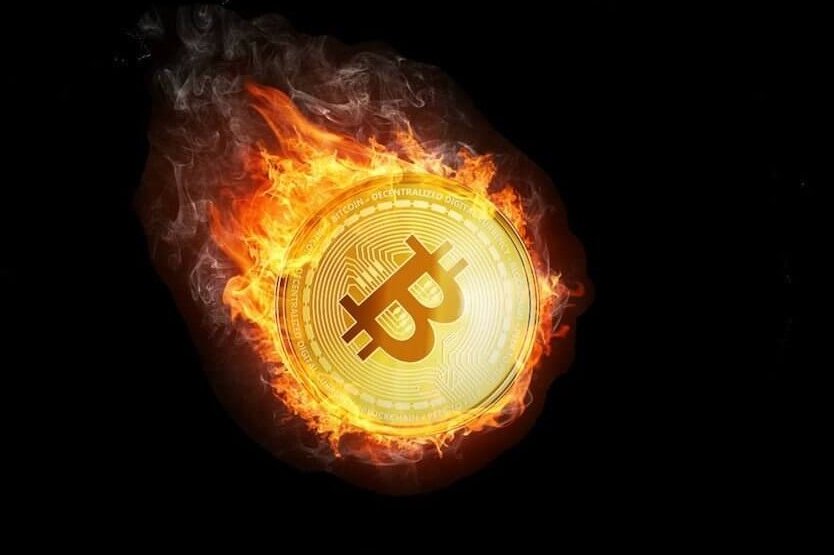

Volatility has long been associated with Bitcoin. With wild price rises, there have also been large crashes that follow.
The emotions involved in both the ups and downs can be intense for any investor. Wild highs are greeted with euphoria, and a Bitcoin crash is greeted with denial and fear. There are more logical reasons as to why Bitcoin collapses in price though that investors can look out for.
The largest crashes in the value of Bitcoin have coincided with the largest price rises. Generally, these price rises start off slow and steady. They begin to break resistance lines and traders begin to get excited. When Bitcoin consolidates during these times, altcoins then usually see significant upwards price movement as traders flow into them looking for increased profits.
As this cycle continues, slowly but surely the price of Bitcoin spreads through word of mouth. Those with a passing interest my invest some money looking to take advantage of the increasing prices. However, it is when media sites catch on that the price really begins to see momentum.
For many people, Bitcoin is a fad at best, or at worst some form of Ponzi scheme. Yet when the mainstream news sites catch on to the rising prices, it creates a severe sense of FOMO for many. Retail investors begin to flood the market. In 2017, this was evident with the Coinbase app surging in popularity on the Apple App Store.
Those who got in early tend to withdraw their profits throughout the price rise, but especially when they see retail investors get involved. On top of this, shorts begin to increase. The downward selling pressure becomes too much after the meteoric rise and Bitcoin suddenly comes crashing down just as quickly as it shot up.
The lessons that are learned from such crashes can be cruel. For many, it adds to the idea that Bitcoin is not a serious investment and nothing more than “magic internet money”. Yet once the crash is complete, the cycle has shown through history to repeat itself.
The value of one Bitcoin is what many people focus on. For some it creates great excitement, and for others it makes them want to pull their hair out. However, the value of Bitcoin is not necessarily the most important factor of the cryptocurrency.
Bitcoin works in exactly the same way it did when it was worth $1. The only difference is that you would have to use a lot more Bitcoin to make up the value to buy something. If Bitcoin suffered a massive crash down into the hundreds of dollars, it would still be used by many. In essence, one Bitcoin is worth one Bitcoin.
The underlying value stems from what Bitcoin achieves. Unlike traditional fiat currency that is held in banks and authorised through the government, Bitcoin requires no central authority to make a transaction. It is decentralised and peer-to-peer.
Despite this being key to its underlying value, the majority of people only focus on the price and worry if it is going up or down. Bitcoin has yet to break the shackles of being a speculative investment. Until it does so, the price of Bitcoin will remain volatile, with massive highs and further lows.
Education is key for many people to truly understand the benefits of cryptocurrency, and without such we can expect to continue to see big rises and big crashes.
Fear, uncertainty, and doubt, often labelled FUD, is a term that is used to defend cryptocurrencies from detrimental news, whether fake or true. Bitcoin has been no stranger to fake news, from notions of countries banning Bitcoin to the more recent allegations that India is considering jail sentences for people that hold cryptocurrencies.
When Bitcoin was younger, such pieces of news could have a dramatic impact on the price. However, in more recent times, Bitcoin has become numb to these news stories, with fans nicknaming it “the honey badger” after the aggressive but small African animal. The term FUD has taken on a life of its own though, with any negative news towards a cryptocurrency being labelled as FUD even when true. In a society of fake news, FUD has become an easy excuse for negative press.
The notion of a Bitcoin crash is unlikely to go away while price volatility remains. The focus on the price of Bitcoin also exacerbates these issues, coupled with a lack of understanding from the wider community about precisely what Bitcoin is.
As Bitcoin garners more liquidity, it should become harder for the price to remain volatile, and perhaps one day the symptoms that cause a Bitcoin crash will be but a distant memory.
Denver, Colorado, 24th February 2025, Chainwire
Denver, Colorado, 20th February 2025, Chainwire
Washington, D.C., 18th February 2025, Chainwire
Dubai, UAE, 27th January 2025, Chainwire
Those who enter the market at this time may be surprised to hear that Bitcoin…
George Town, Grand Cayman, 22nd November 2024, Chainwire